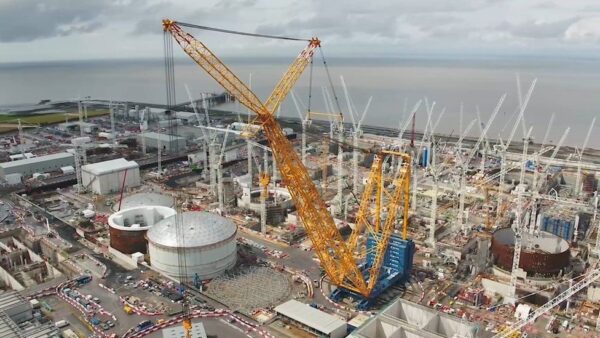The Environment Agency (EA) has removed a requirement for EDF to install an acoustic fish deterrent (AFD) into Hinkley Point C’s cooling system, which the company said could be dangerous to maintain. Environmental groups say millions of fish could be killed per year.
The reactor cooling system tunnels will take in 132,000 litres of water per second from the Severn Estuary to cool the plant’s two nuclear reactors. An AFD would use underwater sound to cause hearing species of fish to swim away.
The Environment Agency consulted on the proposed change to the permit earlier in 2023.
Compliance
The BBC reported a spokesperson for the Environment Agency said: “Our decision is confined to considering whether an AFD requirement is necessary to protect against polluting effects of the discharge. It does not, therefore, deal with entrapment or the impact from entrainment of fish.”
The Environment Agency has set compliance limits on the volume, rate and total biomass discharged from the fish recovery and return (FRR) system’s outlet. It will discharge a maximum of 1.26m³/s (108,863m³/d) of seawater. This seawater will be a portion of the water abstracted for cooling, but it will be diverted and will not pass through the cooling water system to provide a continuous flow through the FRR system. This flow is required to transport fish and invertebrates that have been abstracted along with the seawater and impinged on the drum and band screens along the FRR system and back to the Bristol Channel.
The Environment Agency concluded that the discharges will not result in the condition of nearby Sites of Special Scientific Interest deteriorating or prevent them from improving or recovering, New Civil Engineer stated.
Statements from EDF and WWT
The Wildfowl and Wetlands Trust (WTT) said the system could be vital to protect the marine biology of the Severn Estuary. Interim director of conservation, Tim McGrath, added: “The Severn Estuary supports rare and threatened species of fish as well as nurseries where young fish grow and replenish their populations. Without an effective deterrent in place, or other steps being taken to avoid damage to nature, many more fish will be affected by the development of Hinkley Point C.”
A spokesperson for EDF said the acoustic deterrent was proposed to work in tandem with other measures, including a low velocity intake pipe – allowing fish to swim away – and a fish recovery and return system inside the pipe. It said these two measures remain in the plans.
“We are working with Natural England, Natural Resources Wales and the Environment Agency to develop a comprehensive mitigation package to support the removal of an acoustic fish deterrent, which will form part of a full public consultation later this year,” EDF said.
Whilst the acoustic fish deterrents have been removed from the current permit, the final decision on implementation falls down to a Development Consent Order which are usually within the remit of the Secretary of State.
The story was covered in ENDSreport also and a link to the Environment Agency news story can be read here.
